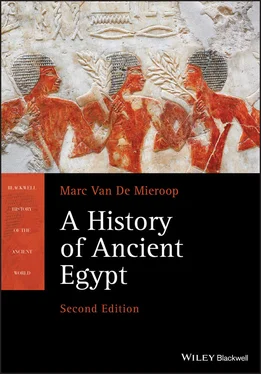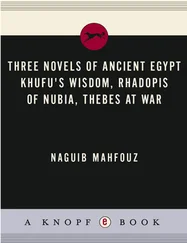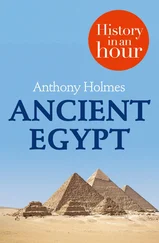Modern subdivisions of Egyptian history
Manetho’s king list presents Egypt’s political history as a millennia‐long succession of dynasties that all functioned under the same circumstances. In the mid‐19th‐century, a German scholar, Karl Josias von Bunsen, decided to break up this sequence into distinctive cycles of sequential and of parallel dynasties and created the modern system of subdividing Egypt’s ancient history into Kingdoms and Intermediate Periods. Today all Egyptologists use his terms Old, Middle, and New Kingdom to indicate when the state was unified, that is, when there was a single ruler for Upper and Lower Egypt, and they see a similar situation later on in the Late Period, when foreigners regularly ruled Egypt as a unified kingdom. In between those periods of centralized power, scholars recognize Intermediate Periods, when various kings ruled simultaneously in multiple centers. The Early Dynastic Period precedes the entire sequence. Although the principle underlying these modern subdivisions is clear – centralized or decentralized power – there is less agreement on their chronological boundaries. Certain elements are standard: the 4th to 6th dynasties are part of the Old Kingdom, the post‐reunification 11th and 12th of the Middle Kingdom, and the 18th through 20th of the New Kingdom. But some scholars, for example, include the 7th and 8th dynasties in the Old Kingdom, while others see that phase as part of the First Intermediate Period.
These designations impose a mental framework on Egypt’s history that is largely erroneous. The alternation between Kingdoms and Intermediate Periods suggests that there were only two modes of political structure, and that all Kingdoms and all Intermediate Periods were alike. Perhaps this was to an extent true for the Kingdoms, which the Egyptians themselves saw as repetitions of the same conditions, but there were great differences between the various Intermediate Periods. Hence, in recent years scholars have suggested renaming the First Intermediate Period as the Period of the Regions, for example. The designation Late Period also suggests that it was an epilogue and that Egypt’s true history ended with the New Kingdom, an outlook no longer accepted. This universally accepted periodization should thus be used as a handy tool, but not uncritically.
Although the relative chronology of Egypt’s history is secure, the absolute dates are not and remain a subject of much research and debate. Theoretically, Manetho could have allowed us to build a secure timeline counting back from Alexander’s conquest of Egypt, but his disregard of overlapping dynasties, as well as the numerous variants in the lengths of reigns in the different excerpts of his work, make this impossible. The chronological information from the other king lists is too fragmentary to provide reliable figures. So, the absolute chronology needs to be reconstructed with other sources. From the mid‐2nd millennium BC on, it is sometimes possible to associate events in Egypt with neighboring cultures in the Near East (whose absolute chronology is firmer), especially in the 1st millennium when various Near Eastern powers invaded the country. In the second half of the 2nd millennium, dated evidence of diplomatic contacts with the Near East helps, but the occasions are few.
Another source for dating Egypt’s history in absolute term derives from ancient astronomical observations of when the Sothis (Sirius or Dog Star) re‐emerged on the eastern horizon just before sunrise after 70 days of invisibility, around July 19 in the modern calendar. Egypt’s administrative calendar counted only 365 days in a year – rather than the 365¼ days of a full astronomical year – and thus the moment Sothis appeared shifted over time. Scholars used to take the very few recorded observations as firm anchors for dating periods, but now they are more skeptical of their value. Also, the technique of measuring the decay of C14 in wooden and other objects can be of help, and very recently a major restudy of that evidence appeared. There are thus multiple systems in use in various publications appearing today; each one has its defenders but none is absolutely certain. 4
1.6 Prehistoric Developments
Because of Egypt’s location at the junction of Africa and Eurasia, many hominid migrations out of Africa passed through the country. It is no surprise then that early human stone tools were found there. The evidence of human activity in the Nile Valley from 700,000 BC to the beginning of Egyptian history around 3000 BC is scarce, however, and at many times nonexistent, and we cannot see a continuous development from these early times. The growth of an Egyptian culture only becomes clear in the last millennia of prehistory, from the mid‐6th millennium on. From 5400 to 3000 is a very long time, but developments in Egypt were rapid when compared to other prehistoric societies. They include a shift in subsistence from hunting and gathering to farming, and the evolution of a social and political structure with a clear hierarchy of power and wealth that culminated in the Egyptian state. Throughout these two‐and‐a‐half millennia we do not see abrupt cultural changes or the sudden appearance of populations that brought new practices with them, so the evolution must have been indigenous, albeit with influences from the outside. The processes of formation of the Egyptian state accelerated around 3400, and we will look at them in the next chapter. Here we will focus on earlier events.
The beginning of agriculture
By 6000 BC the Egyptian climate and the Nile River had settled in patterns similar to the modern, although until 2200 it was more humid than today. It is only in the mid‐6th millennium that agriculture emerged in the country, substantially later than in the neighboring Levant, where people started to live in permanent farming communities by 7000 BC. The relative richness of wild natural resources may explain why the Egyptians adopted the new technology later than people in other areas surrounding the Levant. The Nile provided fish and waterfowl, and in the desert lived game, while wild sorghum and other plants could be harvested. The technology of farming was clearly an import into Egypt as it involved plants and animals not available in the wild there: the primary domesticated animals were sheep and goats, and the first cereals cultivated were emmer wheat and barley, foreign to Egypt and imported from the Near East. The domestication of cattle may have been inspired by practices farther west in Africa. The adoption of agriculture had different consequences in Upper and Lower Egypt.
In the Delta and the Fayyum, people started to live a sedentary lifestyle like their neighbors in the Levant in the 6th millennium. They built villages and obtained most of their food from the cereals they grew. Few settlements are known, and they are small when compared to those in the Levant, but they show that from around 5400 the northern Egyptians practiced farming. In Upper Egypt and Nubia people primarily engaged in pastoralism, the herding of cattle, sheep, and goats. This made them more mobile, and we do not find village settlements near the Nile Valley. The people spent much time in the desert – more fertile than it is now – and most of the permanent remains we have of them are tombs which they dug near the Nile Valley. The graves show that people produced nicely polished pottery and the first representations of humans in figurines, and that they chose to place valuable mineral and metal objects with the dead. Similar burial practices appear from Middle Egypt to Khartoum in Sudan, which suggests that the people over this large area shared common beliefs. We call the material culture Badarian after the archaeological site of el‐Badari in Upper Egypt where it was first excavated. One enigmatic monument of this early period which these pastoralists constructed – now the source of various cosmological theories – is the stone circle at Nabta Playa in Lower Nubia. Today it stands it the middle of a desolate desert some 60 miles (100 kilometers) west of the Nile, but when built in the early 5th millennium the natural environment provided seasonal pasturage to herders. The placement of the stones, up to 2 meters high, required communal organization, and the entire construction shows a common belief system, probably associated with cattle, many of which were buried there.
Читать дальше












